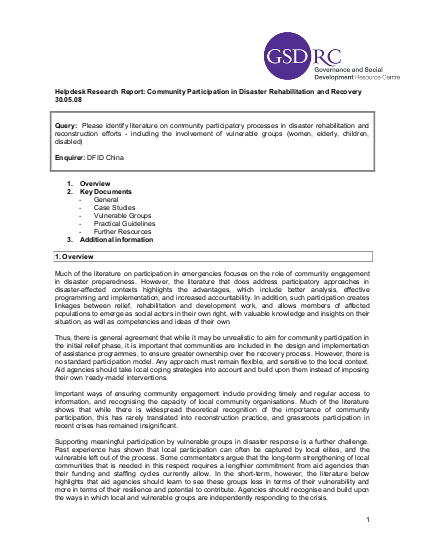
Much of the literature on participation in emergencies focuses on the role of community engagement in disaster preparedness. However, the literature that does address participatory approaches in disaster-affected contexts highlights the advantages, which include better analysis, effective programming and implementation, and increased accountability. In addition, such participation creates linkages between relief, rehabilitation and development work, and allows members of affected populations to emerge as social actors in their own right, with valuable knowledge and insights on their situation, as well as competencies and ideas of their own.
Thus, there is general agreement that while it may be unrealistic to aim for community participation in the initial relief phase, it is important that communities are included in the design and implementation of assistance programmes, to ensure greater ownership over the recovery process. However, there is no standard participation model. Any approach must remain flexible, and sensitive to the local context. Aid agencies should take local coping strategies into account and build upon them instead of imposing their own „ready-made? interventions.